Welcome To
BEAR COUNTRY

COLIN SIMPSON
Mammoth Lakes, California
DON’T leave any food in your car because the bears will tear the door off to get at it,” the motel guy said as he showed us our room. “And if you see a bear when you’re out, DO NOT run away. That’ll trigger its hunting instincts and it’ll come after you – and there’s no way you’ll win.”
The thought of bears marauding through the car park outside our bedroom during the night made my wife Sue glance nervously at the doorway. The door did, I had to admit, look pretty flimsy even by motel standards. There were twin beds, and my memory is that I gallantly volunteered to take the one nearest the door so I could protect Sue should a giant animal break in. Her version is that I insisted she use it instead.
“If you see a bear, best thing to do is stand your ground, big yourself up and make a lot of noise – clap your hands and shout “BAD BEAR”, the motel guy continued with a little too much relish. The chances of a hungry American black bear backing down simply because it is told it’s been bad seemed remote, but I duly noted the advice just in case.
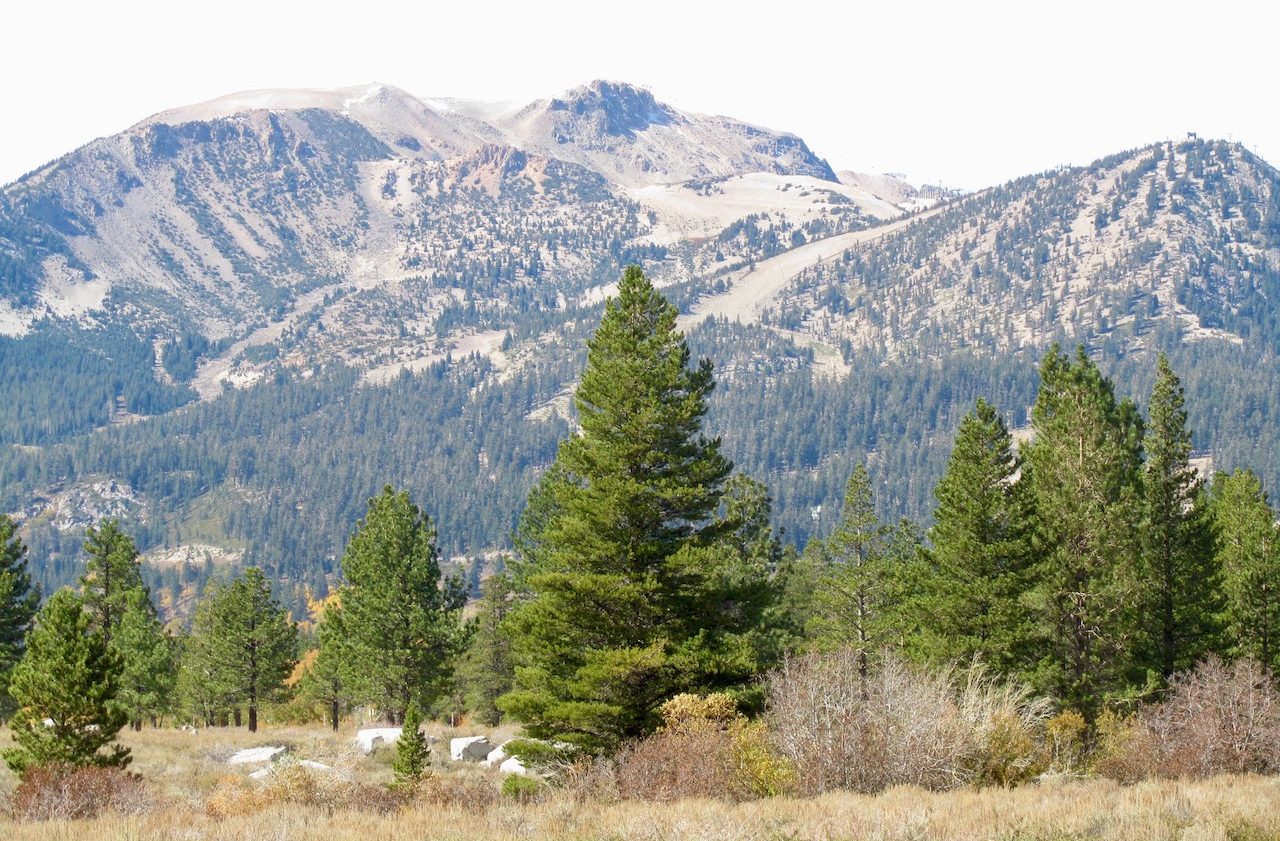
We were in the mountain town of Mammoth Lakes in California’s Eastern Sierra. It’s a well-heeled place, and in the winter it attracts skiers and snowboarders. The bulk of visitors come from Los Angeles, according to tourism figures, and it has the feel of an upscale LA suburb, but with mountains, trees and clean air. There are some smart shops and the odd unfeasibly trendy coffee place.
We’d never heard of it, but one of the joys of travelling in California is coming across places that aren’t particularly famous outside the state, but nevertheless turn out to be memorable. Apart from nearby Mammoth Mountain and the lakes that gave the town its name, there are those bears. I found their presence fascinating, Sue less so.
Sadly, I didn’t see any, even when – to her consternation – I went off for a walk in the hope of finding one. I admit that I felt a bit nervous at one point in a forest path where the dense mass of trees and undergrowth blocked the view ahead. I began to whistle and speak loudly in the hope of warning off any lurking bears, and may even have said “BAD BEAR!”
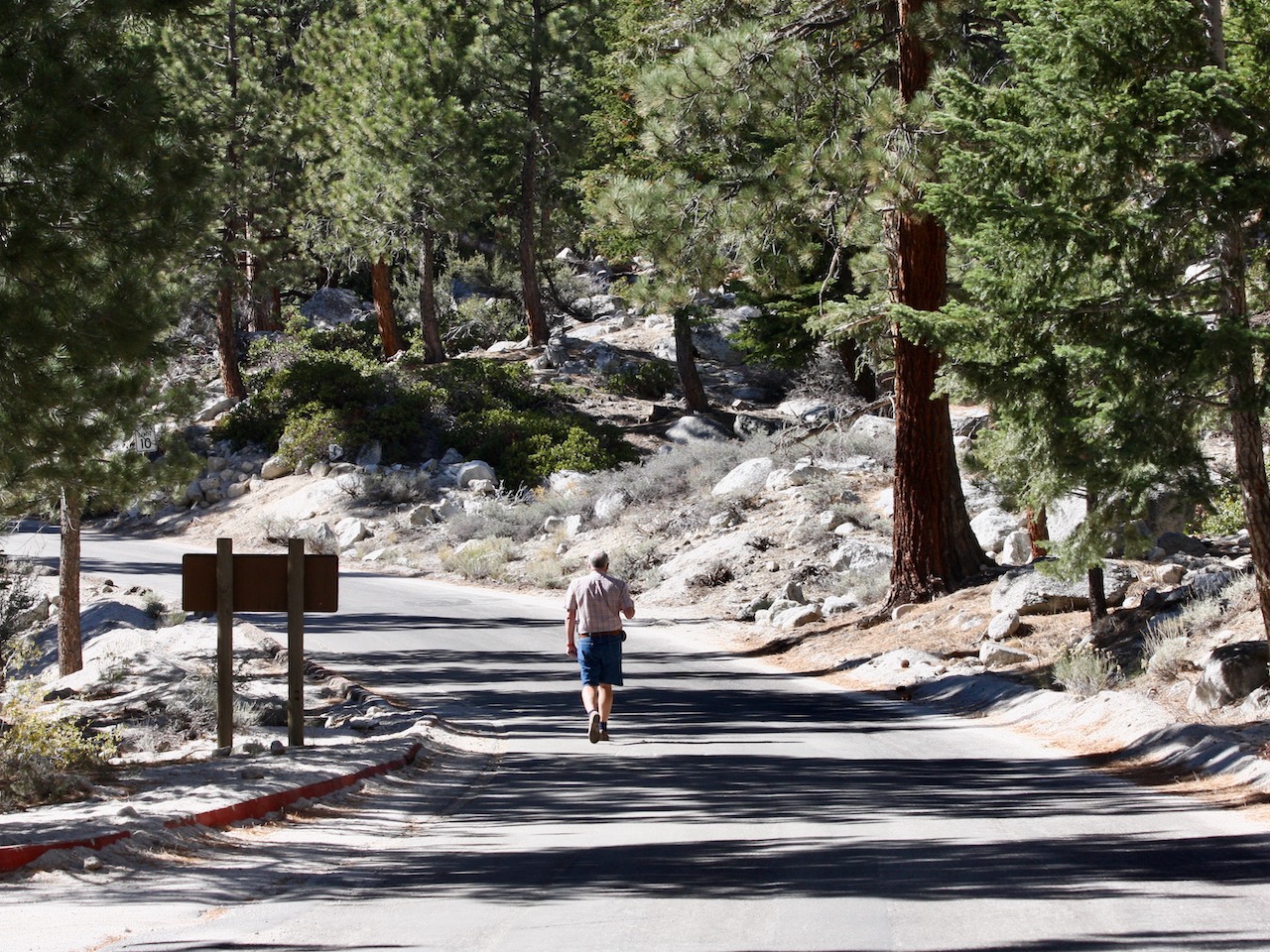
Even though I didn’t see any, evidence of them could be found around town in the form of giant mounds of droppings. It seems the saying about what they do in the woods isn’t always true.
Wildlife experts say around 26 bears live in Mammoth Lakes. The animals are not naturally aggressive, though they can become hostile if they feel threatened.
As is often the case, mankind is more of a threat to them than the other way around. We heard talk of bears dying after being hit by cars and trucks, and cases of this happening have been reported locally. Some bears have been shot after becoming a threat because people gave them food. This has the effect of domesticating the wild animals, which can make them more aggressive.

We were surprised to learn that, even though it’s bear country, people go camping in the forests and hillsides around Mammoth Lakes, and the area is also popular with hikers. The town’s tourism site includes safety advice – in addition to the “no feeding” message, visitors are warned against taking selfies with bears! Other advice echoes the recommendations made by the motel guy.
The bears have an acute sense of smell, which is how they detect items of food that are left in cars. They are also attracted by scented toiletries such as shampoo and soap. The post’s author, outdoors writer Monica Prelle, adds that if a black bear attacks then you should if necessary fight back.
She includes this important caveat: “Recommendations regarding a bear attack are entirely different if you were to encounter a different species of bear, such as a grizzly, in other parts of the country.”
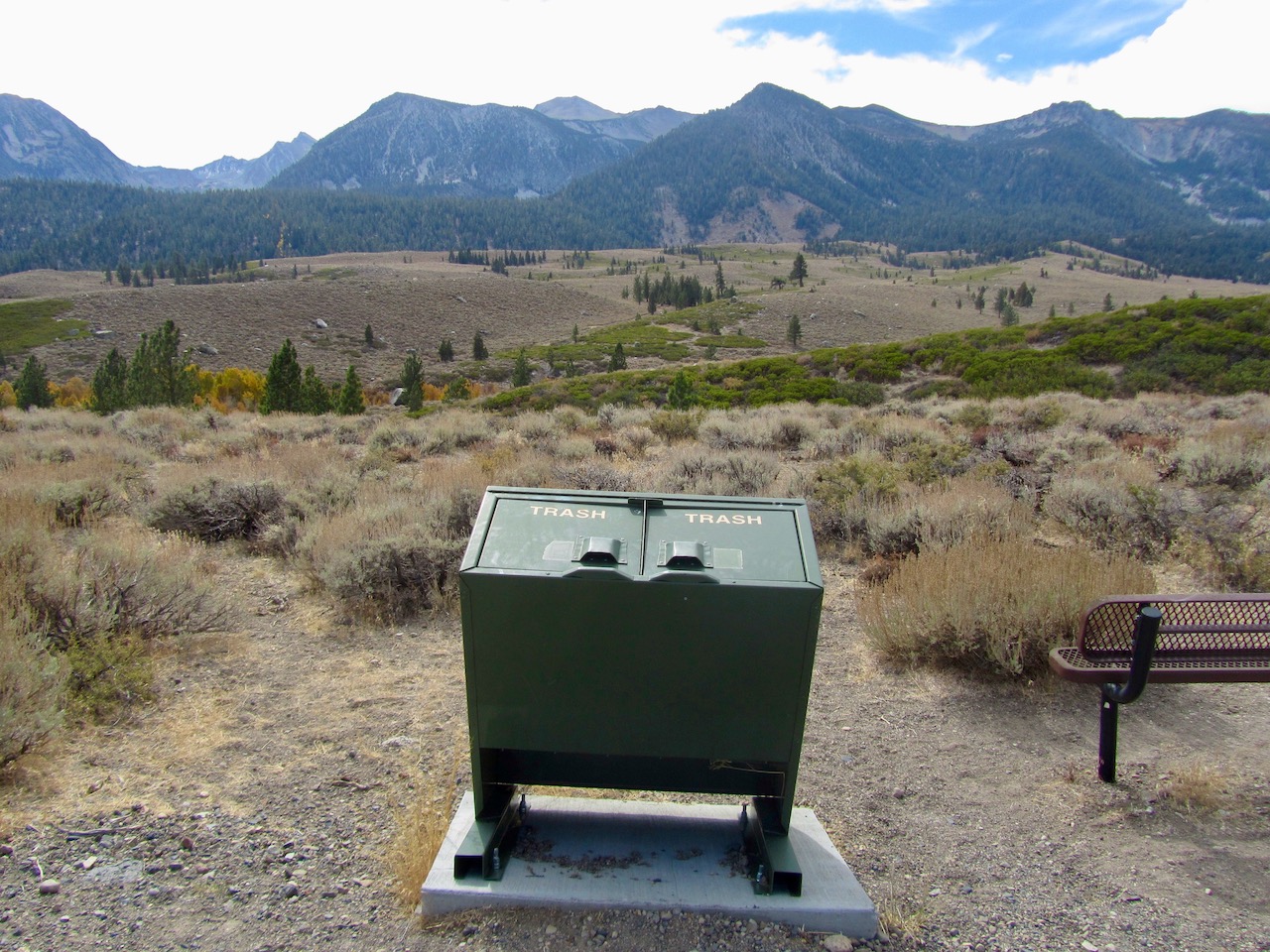
Until recently, Mammoth Lakes had its own bear whisperer. Steve Searles worked as the town’s wildlife specialist for many years, helping to deal with problem animals, handing out “Mammoth. Don’t Feed Our Bears” bumper stickers, and urging locals to lock up their garbage dumpsters. He is the subject of a TV series that’s available on Amazon Prime Video.
Last month Searles became one of the more unlikely victims of the coronavirus epidemic. The municipality, facing budget deficits because of the crisis, asked him to work for six months instead of throughout the year. This would have cut his salary in half, so he decided to resign.
He told the New York Times he opposed killing problem bears as they could be trained to steer clear of humans and their property.
“I never met a bear that couldn’t learn,” he said, adding: “I mean, I don’t try to teach bears geometry or how to ride a unicycle.”
Top photo courtesy Skeeze/Pixabay
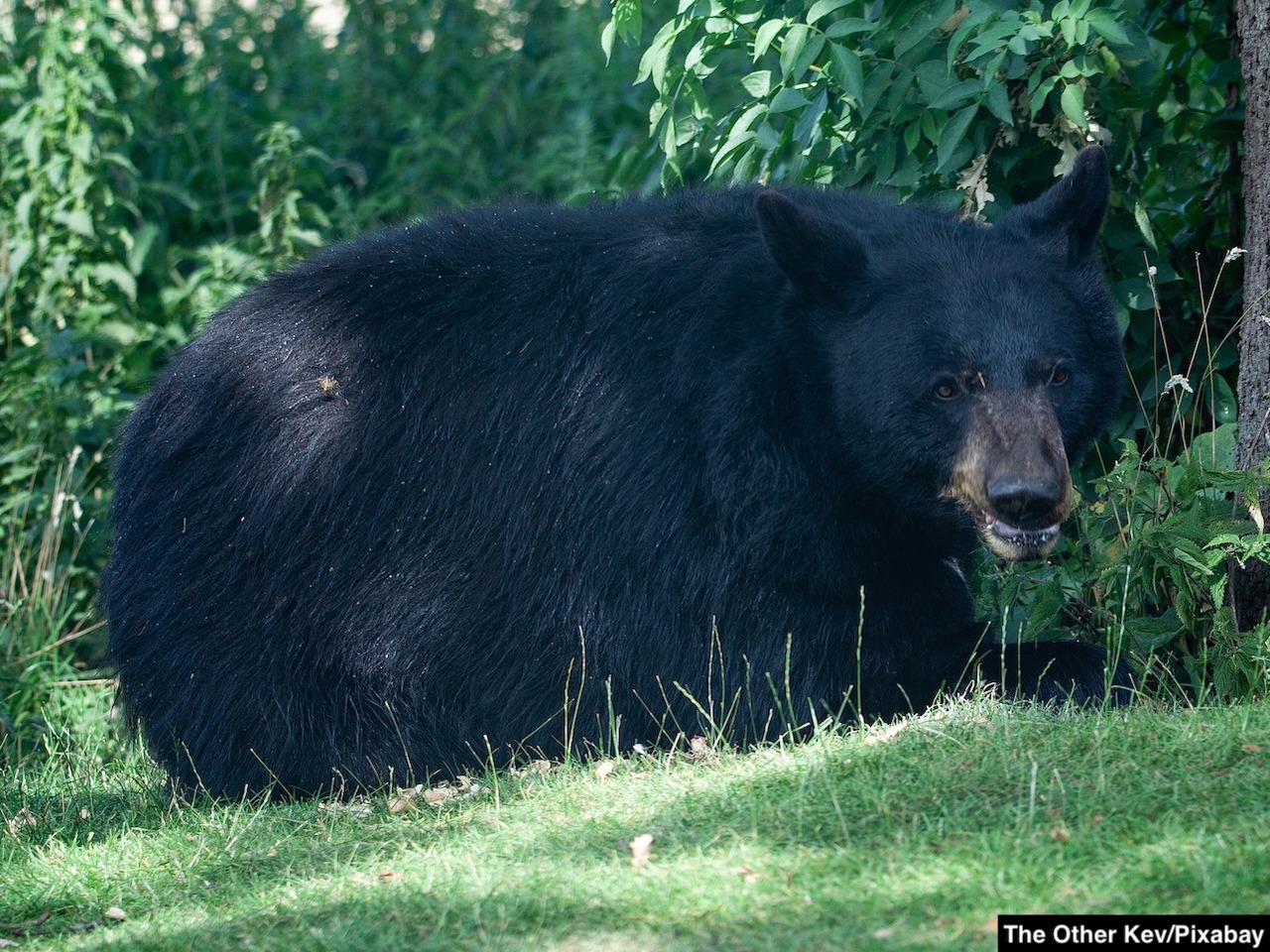
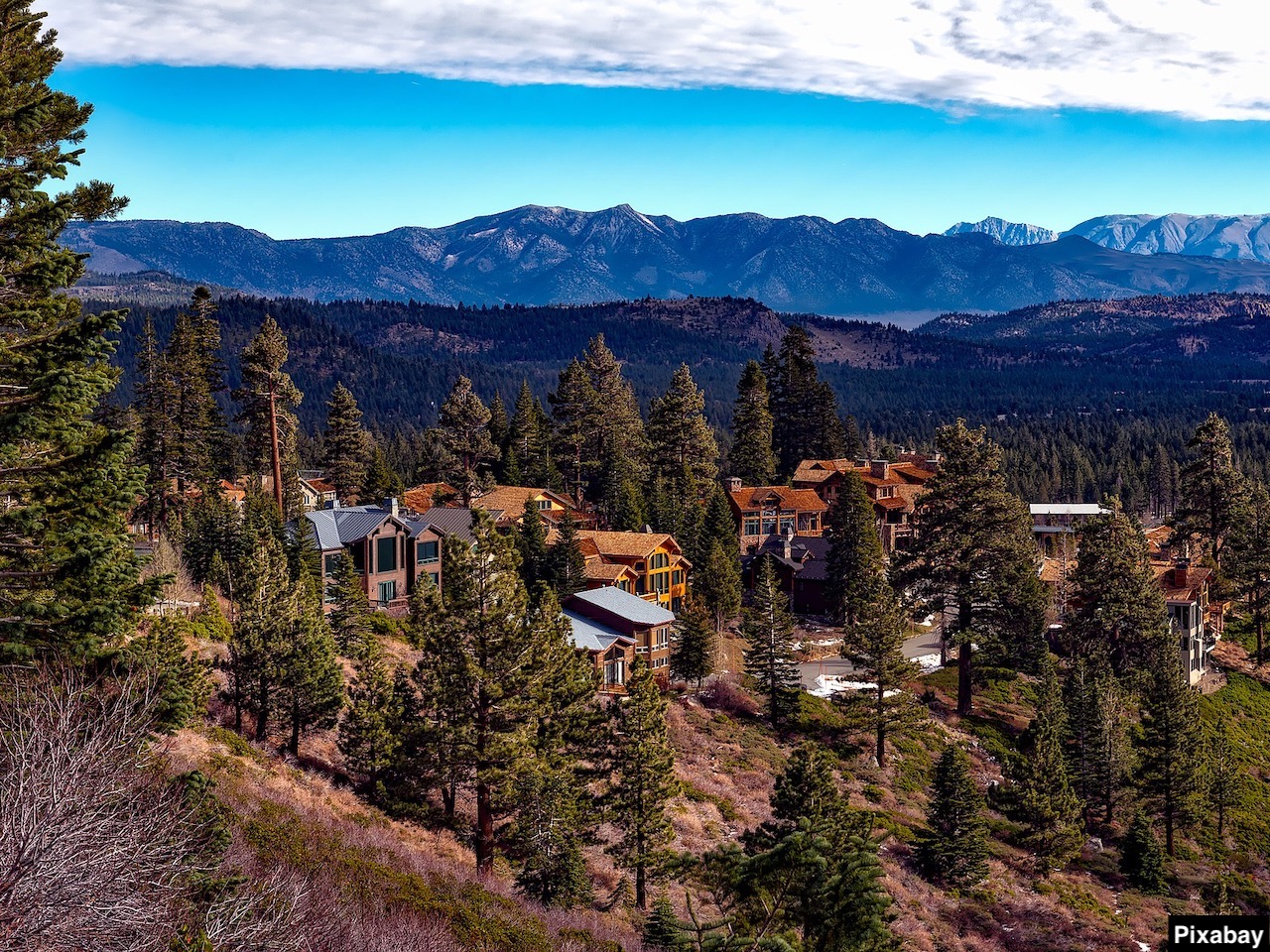

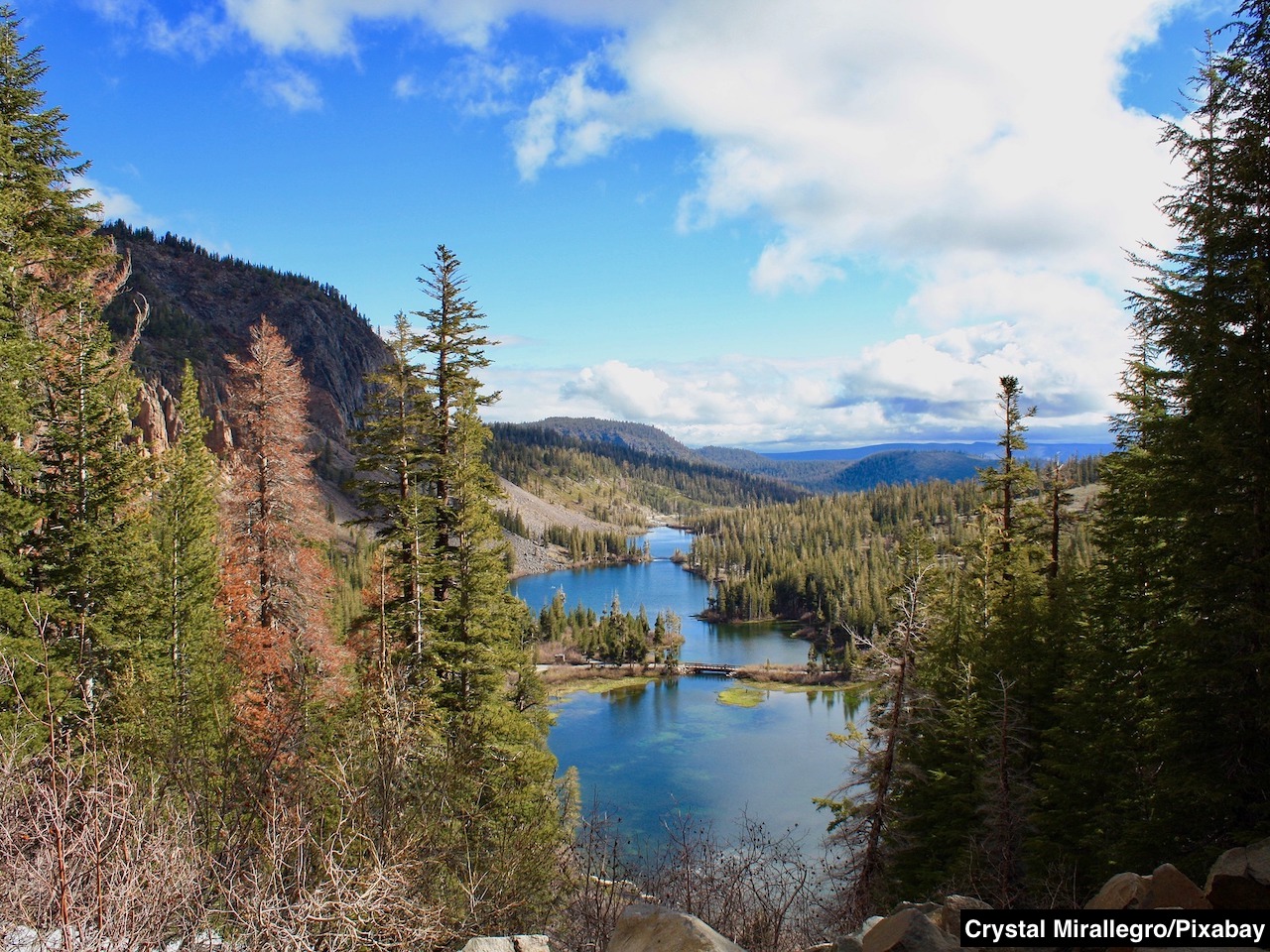
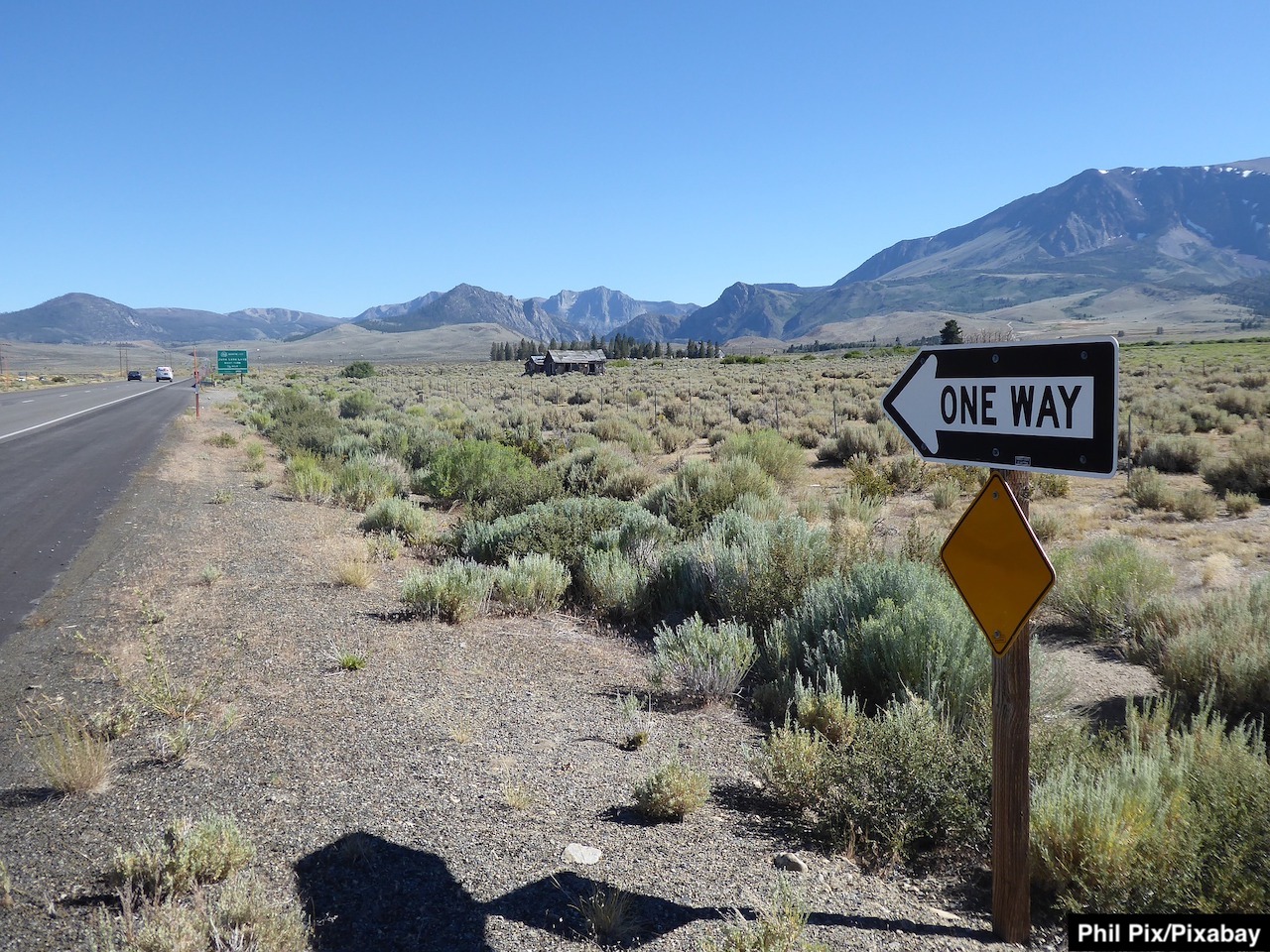
NEED TO KNOW: Mammoth Lakes CA
 LOCATION: Mammoth Lakes, in the Sierra Nevada Mountains, is in Mono County, California. It lies to the east of 2,400-metre high Mammoth Mountain and close to Yosemite National Park. It is 450 kilometres east of the San Francisco Bay Area and 500km north of Los Angeles. GETTING THERE: The Mammoth Lakes Tourism site (see below) has details of driving routes from Southern California, Northern California and Nevada. Winter visitors should check road conditions on the California Department of Transportation or Nevada Department of Transportation sites. Flights to and from Mammoth Yosemite Airport have been suspended until further notice because of the coronavirus crisis.
LOCATION: Mammoth Lakes, in the Sierra Nevada Mountains, is in Mono County, California. It lies to the east of 2,400-metre high Mammoth Mountain and close to Yosemite National Park. It is 450 kilometres east of the San Francisco Bay Area and 500km north of Los Angeles. GETTING THERE: The Mammoth Lakes Tourism site (see below) has details of driving routes from Southern California, Northern California and Nevada. Winter visitors should check road conditions on the California Department of Transportation or Nevada Department of Transportation sites. Flights to and from Mammoth Yosemite Airport have been suspended until further notice because of the coronavirus crisis.
THINGS TO DO: Mammoth Lakes is a classic outdoors destination, offering biking, fishing, hiking, camping, boating, paddle boarding, kayaking and winter sports. EATING, SHOPPING: You can choose from fast food, cafes and delis, casual dining outlets and fine dining restaurants. There are local boutiques, ski and outdoor stores and a range of premium brands. CONTACTS: Mammoth Lakes Tourism, 2520 Main Street, Mammoth Lakes, CA 93546. Mailing Address: PO Box 48, Mammoth Lakes, CA 93546. Phone: (1) 760 934 2712. Email: info@visitmammoth.com
August 2020
MORE INFO
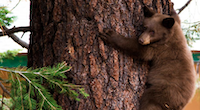 THE BEAR SAFETY page on the Mammoth Lakes Tourism site is packed with useful advice, and includes the surprising fact that American black bears aren’t always black – they can be brown or even blonde. READ MORE
THE BEAR SAFETY page on the Mammoth Lakes Tourism site is packed with useful advice, and includes the surprising fact that American black bears aren’t always black – they can be brown or even blonde. READ MORE
RELATED
 CALIFORNIA’S AMAZING WILDLIFE – GALLERY: Whales, elephant seals, elk, sea lions… California has all these and much, much more. But did you know that you can also find zebras grazing on the roadside in one part of the Golden State? READ MORE
CALIFORNIA’S AMAZING WILDLIFE – GALLERY: Whales, elephant seals, elk, sea lions… California has all these and much, much more. But did you know that you can also find zebras grazing on the roadside in one part of the Golden State? READ MORE
 BET YOU’LL LOVE THESE PANDAS: It’s a hot, lazy, high-summer morning as I turn up at the Macau Giant Panda Pavilion – and the idle mood extends to the stars of the show… READ MORE, WATCH VIDEO
BET YOU’LL LOVE THESE PANDAS: It’s a hot, lazy, high-summer morning as I turn up at the Macau Giant Panda Pavilion – and the idle mood extends to the stars of the show… READ MORE, WATCH VIDEO
RECOMMENDED
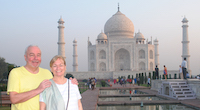 WELCOME TO OUR WORLD! Afaranwide’s home page – this is where you can find out about our latest posts and other highlights. READ MORE
WELCOME TO OUR WORLD! Afaranwide’s home page – this is where you can find out about our latest posts and other highlights. READ MORE
 TOP 10 VIRTUAL ATTRACTIONS: Many of the world’s most popular tourists sites are closed because of the coronavirus crisis, but you can still visit them virtually while you’re self-isolating. READ MORE
TOP 10 VIRTUAL ATTRACTIONS: Many of the world’s most popular tourists sites are closed because of the coronavirus crisis, but you can still visit them virtually while you’re self-isolating. READ MORE
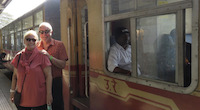 SHIMLA, QUEEN OF THE HILLS: Government officials once retreated to Shimla in the foothills of the Himalayas to escape India’s blazing hot summers. Now tourists make the same journey. READ MORE
SHIMLA, QUEEN OF THE HILLS: Government officials once retreated to Shimla in the foothills of the Himalayas to escape India’s blazing hot summers. Now tourists make the same journey. READ MORE
 TEN THINGS WE LEARNED: Our up-to-the-minute guide to creating a website, one step at a time. The costs, the mistakes – it’s what we wish we’d known when we started blogging. READ MORE
TEN THINGS WE LEARNED: Our up-to-the-minute guide to creating a website, one step at a time. The costs, the mistakes – it’s what we wish we’d known when we started blogging. READ MORE
 TROUBLED TIMES FOR EXPATS: Moving abroad can seem an idyllic prospect, but what happens when sudden upheavals or the inescapable realities of life intrude? READ MORE
TROUBLED TIMES FOR EXPATS: Moving abroad can seem an idyllic prospect, but what happens when sudden upheavals or the inescapable realities of life intrude? READ MORE
Disclosure: Afaranwide is an affiliate of leading travel operators such as Booking.com and Japan Rail Pass. If you purchase through our site we receive, at no additional cost to you, a small commission. We only work with companies we have used and recommend.
LET'S KEEP IN TOUCH!
Welcome To
BEAR COUNTRY

COLIN SIMPSON
Mammoth Lakes, California
DON’T leave any food in your car because the bears will tear the door off to get at it,” the motel guy said as he showed us our room. “And if you see a bear when you’re out, DO NOT run away. That’ll trigger its hunting instincts and it’ll come after you – and there’s no way you’ll win.”
The thought of bears marauding through the car park outside our bedroom during the night made my wife Sue glance nervously at the doorway. The door did, I had to admit, look pretty flimsy even by motel standards. There were twin beds, and my memory is that I gallantly volunteered to take the one nearest the door so I could protect Sue should a giant animal break in. Her version is that I insisted she use it instead.
“If you see a bear, best thing to do is stand your ground, big yourself up and make a lot of noise – clap your hands and shout “BAD BEAR”, the motel guy continued with a little too much relish. The chances of a hungry American black bear backing down simply because it is told it’s been bad seemed remote, but I duly noted the advice just in case.

We were in the mountain town of Mammoth Lakes in California’s Eastern Sierra. It’s a well-heeled place, and in the winter it attracts skiers and snowboarders. The bulk of visitors come from Los Angeles, according to tourism figures, and it has the feel of an upscale LA suburb, but with mountains, trees and clean air. There are some smart shops and the odd unfeasibly trendy coffee place.
We’d never heard of it, but one of the joys of travelling in California is coming across places that aren’t particularly famous outside the state, but nevertheless turn out to be memorable. Apart from nearby Mammoth Mountain and the lakes that gave the town its name, there are those bears. I found their presence fascinating, Sue less so.
Sadly, I didn’t see any, even when – to her consternation – I went off for a walk in the hope of finding one. I admit that I felt a bit nervous at one point in a forest path where the dense mass of trees and undergrowth blocked the view ahead. I began to whistle and speak loudly in the hope of warning off any lurking bears, and may even have said “BAD BEAR!”

Even though I didn’t see any, evidence of them could be found around town in the form of giant mounds of droppings. It seems the saying about what they do in the woods isn’t always true.
Wildlife experts say around 26 bears live in Mammoth Lakes. The animals are not naturally aggressive, though they can become hostile if they feel threatened.
As is often the case, mankind is more of a threat to them than the other way around. We heard talk of bears dying after being hit by cars and trucks, and cases of this happening have been reported locally. Some bears have been shot after becoming a threat because people gave them food. This has the effect of domesticating the wild animals, which can make them more aggressive.

We were surprised to learn that, even though it’s bear country, people go camping in the forests and hillsides around Mammoth Lakes, and the area is also popular with hikers. The town’s tourism site includes safety advice – in addition to the “no feeding” message, visitors are warned against taking selfies with bears! Other advice echoes the recommendations made by the motel guy.
The bears have an acute sense of smell, which is how they detect items of food that are left in cars. They are also attracted by scented toiletries such as shampoo and soap. The post’s author, outdoors writer Monica Prelle, adds that if a black bear attacks then you should if necessary fight back.
She includes this important caveat: “Recommendations regarding a bear attack are entirely different if you were to encounter a different species of bear, such as a grizzly, in other parts of the country.”

Until recently, Mammoth Lakes had its own bear whisperer. Steve Searles worked as the town’s wildlife specialist for many years, helping to deal with problem animals, handing out “Mammoth. Don’t Feed Our Bears” bumper stickers, and urging locals to lock up their garbage dumpsters. He is the subject of a TV series that’s available on Amazon Prime Video.
Last month Searles became one of the more unlikely victims of the coronavirus epidemic. The municipality, facing budget deficits because of the crisis, asked him to work for six months instead of throughout the year. This would have cut his salary in half, so he decided to resign.
He told the New York Times he opposed killing problem bears as they could be trained to steer clear of humans and their property.
“I never met a bear that couldn’t learn,” he said, adding: “I mean, I don’t try to teach bears geometry or how to ride a unicycle.”
Top photo courtesy Skeeze/Pixabay





NEED TO KNOW: Mammoth Lakes CA
 LOCATION: Mammoth Lakes, in the Sierra Nevada Mountains, is in Mono County, California. It lies to the east of 2,400-metre high Mammoth Mountain and close to Yosemite National Park. It is 450 kilometres east of the San Francisco Bay Area and 500km north of Los Angeles. GETTING THERE: The Mammoth Lakes Tourism site (see below) has details of driving routes from Southern California, Northern California and Nevada. Winter visitors should check road conditions on the California Department of Transportation or Nevada Department of Transportation sites. Flights to and from Mammoth Yosemite Airport have been suspended until further notice because of the coronavirus crisis.
LOCATION: Mammoth Lakes, in the Sierra Nevada Mountains, is in Mono County, California. It lies to the east of 2,400-metre high Mammoth Mountain and close to Yosemite National Park. It is 450 kilometres east of the San Francisco Bay Area and 500km north of Los Angeles. GETTING THERE: The Mammoth Lakes Tourism site (see below) has details of driving routes from Southern California, Northern California and Nevada. Winter visitors should check road conditions on the California Department of Transportation or Nevada Department of Transportation sites. Flights to and from Mammoth Yosemite Airport have been suspended until further notice because of the coronavirus crisis.
THINGS TO DO: Mammoth Lakes is a classic outdoors destination, offering biking, fishing, hiking, camping, boating, paddle boarding, kayaking and winter sports. EATING, SHOPPING: You can choose from fast food, cafes and delis, casual dining outlets and fine dining restaurants. There are local boutiques, ski and outdoor stores and a range of premium brands. CONTACTS: Mammoth Lakes Tourism, 2520 Main Street, Mammoth Lakes, CA 93546. Mailing Address: PO Box 48, Mammoth Lakes, CA 93546. Phone: (1) 760 934 2712. Email: info@visitmammoth.com
August 2020
MORE INFO
 THE BEAR SAFETY page on the Mammoth Lakes Tourism site is packed with useful advice, and includes the surprising fact that American black bears aren’t always black – they can be brown or even blonde. READ MORE
THE BEAR SAFETY page on the Mammoth Lakes Tourism site is packed with useful advice, and includes the surprising fact that American black bears aren’t always black – they can be brown or even blonde. READ MORE
RELATED
 CALIFORNIA’S AMAZING WILDLIFE – GALLERY: Whales, elephant seals, elk, sea lions… California has all these and much, much more. But did you know that you can also find zebras grazing on the roadside in one part of the Golden State? READ MORE
CALIFORNIA’S AMAZING WILDLIFE – GALLERY: Whales, elephant seals, elk, sea lions… California has all these and much, much more. But did you know that you can also find zebras grazing on the roadside in one part of the Golden State? READ MORE
 BET YOU’LL LOVE THESE PANDAS: It’s a hot, lazy, high-summer morning as I turn up at the Macau Giant Panda Pavilion – and the idle mood extends to the stars of the show… READ MORE, WATCH VIDEO
BET YOU’LL LOVE THESE PANDAS: It’s a hot, lazy, high-summer morning as I turn up at the Macau Giant Panda Pavilion – and the idle mood extends to the stars of the show… READ MORE, WATCH VIDEO
RECOMMENDED
 WELCOME TO OUR WORLD! Afaranwide’s home page – this is where you can find out about our latest posts and other highlights. READ MORE
WELCOME TO OUR WORLD! Afaranwide’s home page – this is where you can find out about our latest posts and other highlights. READ MORE
 TOP 10 VIRTUAL ATTRACTIONS: Many of the world’s most popular tourists sites are closed because of the coronavirus crisis, but you can still visit them virtually while you’re self-isolating. READ MORE
TOP 10 VIRTUAL ATTRACTIONS: Many of the world’s most popular tourists sites are closed because of the coronavirus crisis, but you can still visit them virtually while you’re self-isolating. READ MORE
 SHIMLA, QUEEN OF THE HILLS: Government officials once retreated to Shimla in the foothills of the Himalayas to escape India’s blazing hot summers. Now tourists make the same journey. READ MORE
SHIMLA, QUEEN OF THE HILLS: Government officials once retreated to Shimla in the foothills of the Himalayas to escape India’s blazing hot summers. Now tourists make the same journey. READ MORE
 TEN THINGS WE LEARNED: Our up-to-the-minute guide to creating a website, one step at a time. The costs, the mistakes – it’s what we wish we’d known when we started blogging. READ MORE
TEN THINGS WE LEARNED: Our up-to-the-minute guide to creating a website, one step at a time. The costs, the mistakes – it’s what we wish we’d known when we started blogging. READ MORE
 TROUBLED TIMES FOR EXPATS: Moving abroad can seem an idyllic prospect, but what happens when sudden upheavals or the inescapable realities of life intrude? READ MORE
TROUBLED TIMES FOR EXPATS: Moving abroad can seem an idyllic prospect, but what happens when sudden upheavals or the inescapable realities of life intrude? READ MORE
Disclosure: Afaranwide is an affiliate of leading travel operators such as Booking.com and Japan Rail Pass. If you purchase through our site we receive, at no additional cost to you, a small commission. We only work with companies we have used and recommend.
LET'S KEEP IN TOUCH!

Welcome To
BEAR COUNTRY

COLIN SIMPSON
Mammoth Lakes, California, US
DON’T leave any food in your car because the bears will tear the door off to get at it,” the motel guy said as he showed us our room. “And if you see a bear when you’re out, DO NOT run away. That’ll trigger its hunting instincts and it’ll come after you – and there’s no way you’ll win.”
The thought of bears marauding through the car park outside our bedroom during the night made my wife Sue glance nervously at the doorway. The door did, I had to admit, look pretty flimsy even by motel standards.
There were twin beds, and my memory is that I gallantly volunteered to take the one nearest the door so I could protect Sue should a giant animal break in. Her version is that I insisted she use it instead.
“If you see a bear, best thing to do is stand your ground, big yourself up and make a lot of noise – clap your hands and shout “BAD BEAR”, the motel guy continued with a little too much relish. The chances of a hungry American black bear backing down simply because it is told it’s been bad seemed remote, but I duly noted the advice just in case.

We were in the mountain town of Mammoth Lakes in California’s Eastern Sierra. It’s a well-heeled place, and in the winter it attracts skiers and snowboarders.
The bulk of visitors come from Los Angeles, according to tourism figures, and it has the feel of an upscale LA suburb, but with mountains, trees and clean air. There are some smart shops and the odd unfeasibly trendy coffee place.
We’d never heard of it, but one of the joys of travelling in California is coming across places that aren’t particularly famous outside the state, but nevertheless turn out to be memorable. Apart from nearby Mammoth Mountain and the lakes that gave the town its name, there are those bears. I found their presence fascinating, Sue less so.
Sadly, I didn’t see any, even when – to her consternation – I went off for a walk in the hope of finding one. I admit that I felt a bit nervous at one point in a forest path where the dense mass of trees and undergrowth blocked the view ahead. I began to whistle and speak loudly in the hope of warning off any lurking bears, and may even have said “BAD BEAR!”

Even though I didn’t see any, evidence of them could be found around town in the form of giant mounds of droppings. It seems the saying about what they do in the woods isn’t always true.
Wildlife experts say around 26 bears live in Mammoth Lakes. The animals are not naturally aggressive, though they can become hostile if they feel threatened.
As is often the case, mankind is more of a threat to them than the other way around. We heard talk of bears dying after being hit by cars and trucks, and cases of this happening have been reported locally. Some bears have been shot after becoming a threat because people gave them food. This has the effect of domesticating the wild animals, which can make them more aggressive.

We were surprised to learn that, even though it’s bear country, people go camping in the forests and hillsides around Mammoth Lakes, and the area is also popular with hikers.
The town’s tourism site includes safety advice – in addition to the “no feeding” message, visitors are warned against taking selfies with bears! Other advice echoes the recommendations made by the motel guy.

The bears have an acute sense of smell, which is how they detect items of food that are left in cars. They are also attracted by scented toiletries such as shampoo and soap. The post’s author, outdoors writer Monica Prelle, adds that if a black bear attacks then you should if necessary fight back.
She includes this important caveat: “Recommendations regarding a bear attack are entirely different if you were to encounter a different species of bear, such as a grizzly, in other parts of the country.”

Until recently, Mammoth Lakes had its own bear whisperer. Steve Searles worked as the town’s wildlife specialist for many years, helping to deal with problem animals, handing out “Mammoth. Don’t Feed Our Bears” bumper stickers, and urging locals to lock up their garbage dumpsters. He is the subject of a TV series that’s available on Amazon Prime Video.
Last month Searles became one of the more unlikely victims of the coronavirus epidemic. The municipality, facing budget deficits because of the crisis, asked him to work for six months instead of throughout the year. This would have cut his salary in half, so he decided to resign.
He told the New York Times he opposed killing problem bears as they could be trained to steer clear of humans and their property.
“I never met a bear that couldn’t learn,” he said, adding: “I mean, I don’t try to teach bears geometry or how to ride a unicycle.”
Top photo courtesy Skeeze/Pixabay
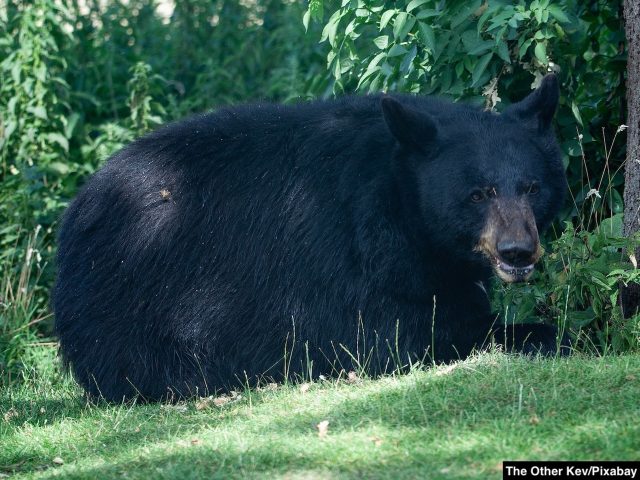
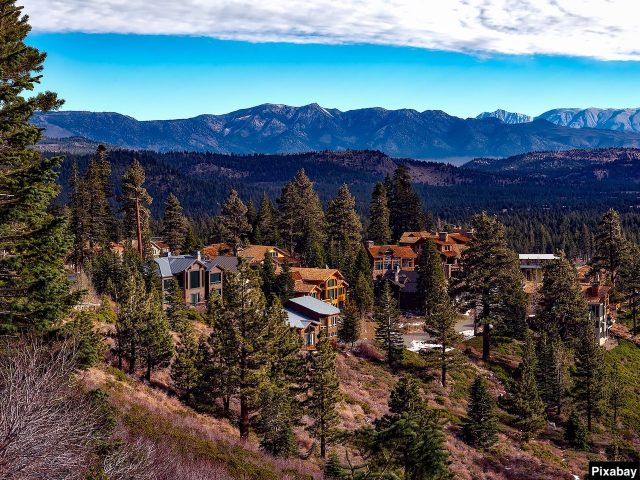

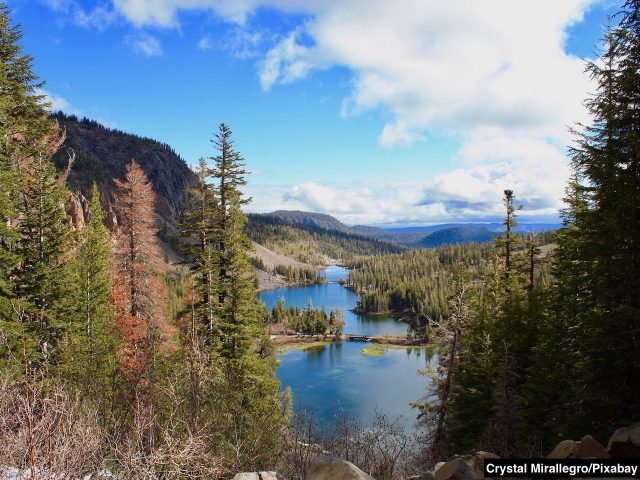

NEED TO KNOW
LOCATION: Mammoth Lakes, in the Sierra Nevada Mountains, is in Mono County, California. It lies to the east of 2,400-metre high Mammoth Mountain and close to Yosemite National Park. It is 450 kilometres east of the San Francisco Bay Area and 500km north of Los Angeles.
GETTING THERE: The Mammoth Lakes Tourism site (see below) has details of driving routes from Southern California, Northern California and Nevada. Winter visitors should check road conditions on the California Department of Transportation or Nevada Department of Transportation sites. Flights to and from Mammoth Yosemite Airport have been suspended until further notice because of the coronavirus crisis.
THINGS TO DO: Mammoth Lakes is a classic outdoors destination, offering biking, fishing, hiking, camping, boating, paddle boarding, kayaking and winter sports. EATING, SHOPPING: You can choose from fast food, cafes and delis, casual dining outlets and fine dining restaurants. There are local boutiques, ski and outdoor stores and a range of premium brands.
CONTACTS: Mammoth Lakes Tourism, 2520 Main Street, Mammoth Lakes, CA 93546. Mailing Address: PO Box 48, Mammoth Lakes, CA 93546. Phone: (1) 760 934 2712. Email: info@visitmammoth.com
August 2020
MORE INFO
 THE BEAR SAFETY page on the Mammoth Lakes Tourism site is packed with useful advice, and includes the surprising fact that American black bears aren’t always black – they can be brown or even blonde. READ MORE
THE BEAR SAFETY page on the Mammoth Lakes Tourism site is packed with useful advice, and includes the surprising fact that American black bears aren’t always black – they can be brown or even blonde. READ MORE
RELATED
 CALIFORNIA’S AMAZING WILDLIFE – GALLERY: Whales, elephant seals, elk, sea lions… California has all these and much, much more. But did you know that you can also find zebras grazing on the roadside in one part of the Golden State? READ MORE
CALIFORNIA’S AMAZING WILDLIFE – GALLERY: Whales, elephant seals, elk, sea lions… California has all these and much, much more. But did you know that you can also find zebras grazing on the roadside in one part of the Golden State? READ MORE
 BET YOU’LL LOVE THESE PANDAS: It’s a hot, lazy, high-summer morning as I turn up at the Macau Giant Panda Pavilion – and the idle mood extends to the stars of the show… READ MORE, WATCH VIDEO
BET YOU’LL LOVE THESE PANDAS: It’s a hot, lazy, high-summer morning as I turn up at the Macau Giant Panda Pavilion – and the idle mood extends to the stars of the show… READ MORE, WATCH VIDEO
RECOMMENDED
 WELCOME TO OUR WORLD! Afaranwide’s home page – this is where you can find out about our latest posts and other highlights. READ MORE
WELCOME TO OUR WORLD! Afaranwide’s home page – this is where you can find out about our latest posts and other highlights. READ MORE
 TOP 10 VIRTUAL ATTRACTIONS: Many of the world’s most popular tourists sites are closed because of the coronavirus crisis, but you can still visit them virtually while you’re self-isolating. READ MORE
TOP 10 VIRTUAL ATTRACTIONS: Many of the world’s most popular tourists sites are closed because of the coronavirus crisis, but you can still visit them virtually while you’re self-isolating. READ MORE
 SHIMLA, QUEEN OF THE HILLS: Government officials once retreated to Shimla in the foothills of the Himalayas to escape India’s blazing hot summers. Now tourists make the same journey. READ MORE
SHIMLA, QUEEN OF THE HILLS: Government officials once retreated to Shimla in the foothills of the Himalayas to escape India’s blazing hot summers. Now tourists make the same journey. READ MORE
 TEN THINGS WE LEARNED: Our up-to-the-minute guide to creating a website, one step at a time. The costs, the mistakes – it’s what we wish we’d known when we started blogging. READ MORE
TEN THINGS WE LEARNED: Our up-to-the-minute guide to creating a website, one step at a time. The costs, the mistakes – it’s what we wish we’d known when we started blogging. READ MORE
 TROUBLED TIMES FOR EXPATS: Moving abroad can seem an idyllic prospect, but what happens when sudden upheavals or the inescapable realities of life intrude? READ MORE
TROUBLED TIMES FOR EXPATS: Moving abroad can seem an idyllic prospect, but what happens when sudden upheavals or the inescapable realities of life intrude? READ MORE
Disclosure: Afaranwide is an affiliate of leading travel operators such as Booking.com and Japan Rail Pass. If you purchase through our site we receive, at no additional cost to you, a small commission. We only work with companies we have used and recommend.



